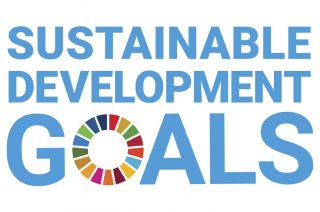
www.buildingsandcities.org/insights/commentaries/misuse-building-performance-simulation.html
Misuse of Building Performance Simulation

A rethink is called for how building data is modelled and the purposes simulation is used for. Better to use models for design decisions than validating compliance?
Michael Donn (Victoria University Wellington) asks: What are appropriate roles and uses for building performance models? What would be better goals and uses for models and the data they generate?
If it is true that 'All models are wrong, but some are useful' can building performance models be trusted? Most users seem to agree that these models reliably show the scale of differences between design options. But, most modellers also agree that they do not predict actual performance. In this case, are these models really suitable for compliance?
The author of the above aphorism, George Box, wrote:
'Since all models are wrong the scientist cannot obtain a 'correct' one by excessive elaboration. On the contrary following William of Occam he [sic] should seek an economical description of natural phenomenon.' (Box 1976)
In developing modern tools of building performance simulation this principle seems to be forgotten. Is our angst about the 'gap' between reality and the 'predictions' of our lighting, thermal, acoustic and air quality performance simulation models evidence of a misconception about the role of models?
What are simulation models for?
Simulation models are constantly being elaborated in an attempt to ensure they are fit-for-purpose, so revisiting Box's idea is of increasing importance. For example, some codes require virtual light level "measurements" in daylit buildings at 300 mm centres. For a 10 x 10 m building this entails 900 sensor calculation points - an unnecessary precision. A 50 x 60 m plan entails 33,000+ separate calculations. Ridiculous.
Although it is possible to model complex networks of interconnecting rooms to examine natural ventilation flow via openable windows and internal doors, modellers seldom know the wind pressures driving these flows. Some certification systems persist in use of single-zone thermal models for compliance-checking at great risk to the overall health of the future occupants. Openable windows are designed for cooling in complete isolation from users' safety, privacy, insect or acoustic concerns. These are merely the tip of a vast iceberg of varying modelling approaches that represent differing world views as to what is important as a measure of performance or the level of detail to model. The list of elaborations published annually is endless.
Box (1976) also wrote:
'Since all models are wrong the scientist must be alert to what is importantly wrong. It is inappropriate to be concerned about mice when there are tigers abroad.'
As a statistician, Box identified the key issue with the emphasis on the 'accuracy' of performance simulation tools. Building performance models have been elaborated over decades of coding, linking together the basic experimental physics and the physiology of 'comfort' with differing degrees of precision. In the process modellers exclude, for example, any allowance for cognition of inhabitants' 'comfort' goals. Analysis of what is important in this elaboration appears to elude both the code writer and the code user. Ignoring cognition in our models provides a plausible explanation of the performance gap.
If Occam's dictum to seek economical models is followed, then the question arises of how to determine what is an appropriate level of simplification? As models are simplifications of reality, what simplifications are acceptable? Since the 1980s, many papers have demonstrated that the same calculation model in different hands can produce wildly different answers. Indeed, two different tools in the hands of the same person can also produce vastly different answers. What are the key or 'killer' variables (Leaman and Bordass 1999) for achieving high (energy / carbon / visual acuity) performance? Also, for compliance, certifiers are now focused on the reliability of the actual number generated, not what modellers are sure of which is the comparative performance of two options in design analysis. Can we develop a minimum modelling capability, and a set of agreed ways of using a model to enable it to be used for code compliance checking against a defined target?
Are assumptions and inputs reliable?
In response to these issues, since the late 1990s, building performance simulation papers have referenced 'quality assurance' regularly. But what does this involve and are the assumption and inputs reliable?
- High quality input data?
Is this REALLY the product specified, or is it a generic default value in the model, or a standard? Can a means be developed to assure compliance checkers that the 'tiger' / 'killer' variables in the model are reliable values?
- Experienced modellers?
How can their models be cross-checked by their colleagues when there is a myriad of inputs? Who has not looked at model outputs and stated 'What must be happening here is …' with no proof? Can a means of automating models be developed that allow the modelling the richness of human habitation, such as opening windows for cooling, when it is not noisy?
- Reliable climate data?
Local climate issues can affect energy performance by 20-30%: urban heat islands, wind speed variations with height and between urban buildings, natural atmospheric temperature changes with height, microclimatic conditions. These are not routinely modelled in design, and are often excluded in compliance calculations. Can a means of automating models be developed to encourage appropriate modelling of local climate, height and wind?
- Plausible models of human behaviour?
There is a risk of creating inappropriate models of human behaviour. For example, where the heating turns on below 17.5oC and off above 18.5 oC; or modelled windows that open for cooling stay open for a full hour even when it is cold outside. This would significantly increase the energy for heating, whilst reducing the cooling. Or, blinds are operated against glare with a similar precision. A plausible level of user involvement can be reliably modelled during design so that performance options can be discussed with clients. This is the significant advantage of moisture models that look at mould growth on surfaces over a 3 year hourly interval modelling cycle; or spring/autumn overheating risks over a 12 month hourly cycle; or the risk of summer over-heating during plausible hourly data of Design Summer years;or risks of glare for particular fractions of the ~4000 hours of daylight. However, encouraging this depth of analysis in a manner that also avoids gaming the system, and that can be checked readily for compliance against targets requires work on both the targets and the modelling processes.
Rethinking the uses of simulation
Dynamic simulation is currently misused. In energy performance, 8760 hourly energy balance calculations are created but only a single annual energy performance index for compliance is reported. The analysis does not examine the risk of mistaken assumptions. For example: if a heat recovery ventilation system fan is too noisy for the householder and they disable it, then what is the health risk in an airtight house? In climate-based daylight (dynamic) modelling, 4000+ hourly radiation balance calculations are generated, but a single performance index is reported. In design this type of behaviour is unforgiveable. Rich time-based data enables discussion about quality of the lived experience. This is, and should be, the focus of design discussions. However, for run-of-the-mill designs, models are for compliance checking, not design analysis.
For compliance checking, far more sophisticated performance criteria are needed than the current practice of simplistic single-number targets. These targets should comprise at least a best and a worst-case operational scenario. Even energy efficiency reporting for cars provides different figures for town and country driving conditions. We also need models that are constrained to:
- report the target compliance while identifying the 'killer' variables;
- reduce the potential for gaming the compliance system by controlling the range and type of inputs;
- incorporate an input data reliability score.
References
Box, G.E.P. (1976). Science and statistics. Journal of the American Statistical Association, 71 (356): 791-799. https://doi.org/10.1080/01621459.1976.10480949
Leaman, A. & Bordass, B. (1999). Productivity in buildings: the 'killer' variables. Building Research & Information, 27(1), 4-19.
Latest Peer-Reviewed Journal Content
A framework for 1.5°C-aligned GHG budgets in architecture
G Betti, I Spaar, D Bachmann, A Jerosch-Herold, E Kühner, R Yang, K Avhad & S Sinning
Net zero retrofit of the building stock [editorial]
D Godoy-Shimizu & P Steadman
Co-learning in living labs: nurturing civic agency and resilience
A Belfield
The importance of multi-roles and code-switching in living labs
H Noller & A Tarik
Researchers’ shifting roles in living labs for knowledge co-production
C-C Dobre & G Faldi
Increasing civic resilience in urban living labs: city authorities’ roles
E Alatalo, M Laine & M Kyrönviita
Co-curation as civic practice in community engagement
Z Li, M Sunikka-Blank, R Purohit & F Samuel
Preserving buildings: emission reductions from circular economy strategies in Austria
N Alaux, V Kulmer, J Vogel & A Passer
Urban living labs: relationality between institutions and local circularity
P Palo, M Adelfio, J Lundin & E Brandão
Living labs: epistemic modelling, temporariness and land value
J Clossick, T Khonsari & U Steven
Co-creating interventions to prevent mosquito-borne disease transmission in hospitals
O Sloan Wood, E Lupenza, D M Agnello, J B Knudsen, M Msellem, K L Schiøler & F Saleh
Circularity at the neighbourhood scale: co-creative living lab lessons
J Honsa, A Versele, T Van de Kerckhove & C Piccardo
Positive energy districts and energy communities: how living labs create value
E Malakhatka, O Shafqat, A Sandoff & L Thuvander
Built environment governance and professionalism: the end of laissez-faire (again)
S Foxell
Co-creating justice in housing energy transitions through energy living labs
D Ricci, C Leiwakabessy, S van Wieringen, P de Koning & T Konstantinou
HVAC characterisation of existing Canadian buildings for decarbonisation retrofit identification
J Adebisi & J J McArthur
Simulation and the building performance gap [editorial]
M Donn
Developing criteria for effective building-sector commitments in nationally determined contributions
P Graham, K McFarlane & M Taheri
Reimagining circularity: actions for optimising the use of existing buildings
R Lundgren, R Kyrö, S Toivonen & L Tähtinen
Effective interdisciplinary stakeholder engagement in net zero building design
S Vakeva-Baird, F Tahmasebi, JJ Williams & D Mumovic
Metrics for building component disassembly potential: a practical framework
H Järvelä, A Lehto, T Pirilä & M Kuittinen
The unfitness of dwellings: why spatial and conceptual boundaries matter
E Nisonen, D Milián Bernal & S Pelsmakers
Environmental variables and air quality: implications for planning and public health
H Itzhak-Ben-Shalom, T Saroglou, V Multanen, A Vanunu, A Karnieli, D Katoshevski, N Davidovitch & I A Meir
Exploring diverse drivers behind hybrid heating solutions
S Kilpeläinen, S Pelsmakers, R Castaño-Rosa & M-S Miettinen
Urban rooms and the expanded ecology of urban living labs
E Akbil & C Butterworth
Living with extreme heat: perceptions and experiences
L King & C Demski
A systemic decision-making model for energy retrofits
C Schünemann, M Dshemuchadse & S Scherbaum
Modelling site-specific outdoor temperature for buildings in urban environments
K Cebrat, J Narożny, M Baborska-Narożny & M Smektała
Understanding shading through home-use experience, measurement and modelling
M Baborska-Narożny, K Bandurski, & M Grudzińska
Building performance simulation for sensemaking in architectural pedagogy
M Bohm
Beyond the building: governance challenges in social housing retrofit
H Charles
Heat stress in social housing districts: tree cover–built form interaction
C Lopez-Ordoñez, E Garcia-Nevado, H Coch & M Morganti
An observational analysis of shade-related pedestrian activity
M Levenson, D Pearlmutter & O Aleksandrowicz
Learning to sail a building: a people-first approach to retrofit
B Bordass, R Pender, K Steele & A Graham
Market transformations: gas conversion as a blueprint for net zero retrofit
A Gillich
Resistance against zero-emission neighbourhood infrastructuring: key lessons from Norway
T Berker & R Woods
Megatrends and weak signals shaping future real estate
S Toivonen
A strategic niche management framework to scale deep energy retrofits
T H King & M Jemtrud
Generative AI: reconfiguring supervision and doctoral research
P Boyd & D Harding
Exploring interactions between shading and view using visual difference prediction
S Wasilewski & M Andersen
How urban green infrastructure contributes to carbon neutrality [briefing note]
R Hautamäki, L Kulmala, M Ariluoma & L Järvi
Implementing and operating net zero buildings in South Africa
R Terblanche, C May & J Steward
Quantifying inter-dwelling air exchanges during fan pressurisation tests
D Glew, F Thomas, D Miles-Shenton & J Parker
Western Asian and Northern African residential building stocks: archetype analysis
S Akin, A Eghbali, C Nwagwu & E Hertwich
Join Our Community

The most important part of any journal is our people – readers, authors, reviewers, editorial board members and editors. You are cordially invited to join our community by joining our mailing list. We send out occasional emails about the journal – calls for papers, special issues, events and more.
We will not share your email with third parties. Read more



Latest Commentaries
COP30 Report
Matti Kuittinen (Aalto University) reflects on his experience of attending the 2025 UN Conference of the Parties in Belém, Brazil. The roadmaps and commitments failed to deliver the objectives of the 2025 Paris Agreement. However, 2 countries - Japan and Senegal - announced they are creating roadmaps to decarbonise their buildings. An international group of government ministers put housing on the agenda - specifying the need for reduced carbon and energy use along with affordability, quality and climate resilience.
Building-Related Research: New Context, New Challenges
Raymond J. Cole (University of British Columbia) reflects on the key challenges raised in the 34 commissioned essays for Buildings & Cities 5th anniversary. Not only are key research issues identified, but the consequences of changing contexts for conducting research and tailoring its influence on society are highlighted as key areas of action.